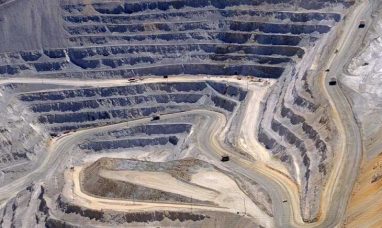- Platinum demand surged 25% in 2023 and will remain robust in 2024
- Near record low platinum supply levels in 2023 will decrease another 1% in 2024
- Automotive demand rose 16% in 2023, set to grow in 2024
- Industrial demand down 14% in 2024 from record high in 2023, but still 12% above pre-COVID five-year average
- Back-to-back net positive investment demand in 2023 and 2024
LONDON, March 6, 2024 /CNW/ –The World Platinum Investment Council – WPIC® – today publishes its Platinum Quarterly for the fourth quarter of 2023 and full year 2023 with a revised forecast for 2024.
The platinum market shifted to a significant deficit of 878 koz in 2023, with shortfalls seen in every quarter, including a deficit of 74 koz in Q4’23. Total demand surged by 25% year-on-year, reaching 8,009 koz, whereas total supply fell to 7,131 koz, the second-lowest figure since 2013, surpassed only by the COVID-impacted year of 2020.
A further deficit of 418 koz is expected for 2024. Demand is anticipated to reduce by 6% to 7,507 koz – however, this is still above the five-year average since 2019 – while total supply is projected to decrease further by 1% year-on-year to 7,089 koz.
Further decline in platinum recycling exacerbates total supply constraints in 2024
Global recycling supply dropped for the third consecutive year in 2023, down 14% year-on-year to 1,495 koz, some 22% below the pre-COVID five-year average. An especially weak Q4’23 resulted in just 346 koz, a 14% year-on-year reduction and the weakest quarter in our time series running from 2014. This was mainly due to an 18% drop in spent autocatalyst recovery, driven by stricter North American anti-theft regulations and China’s restrictions on autocatalyst recycling. A 7% improvement to 1,600 koz is expected in 2024 as spent autocatalyst supply recovers and regulatory restrictions ease.
Global mine supply for 2023 was 5,636 koz, marking a 1% uplift from the reduced supply levels of the previous year. Looking ahead to 2024, global platinum mine supply is expected to decrease by 3% to 5,489 koz. The forecast decline is largely attributable to a reduction in production from South Africa, with a 1% year-on-year decrease forecast (-54 koz), and where ongoing downside risks remain. Additionally, in Russia, production is anticipated to fall by 9% ( -58 koz) year-on-year.
In 2023, above-ground stocks fell 18% to 4,000 koz. Projections for 2024 show a further 10% decline in above-ground stocks to 3,581 koz, hitting a four-year low.
Automotive platinum demand expected to hit a seven-year high in 2024
In 2023, automotive platinum demand surged by 16% to 3,272 koz, benefiting from rising vehicle production and a greater hybrid vehicle share, with increased PGM loadings linked to hybridisation. Additionally, stricter emissions standards for both light and heavy-duty vehicles, especially in China, also drove demand growth. Moreover, platinum-for-palladium substitution reached 669 koz in 2023, a significant rise from 391 koz in 2022.
Growth in automotive demand will continue in 2024, albeit at a more muted pace, with a projected rise of 1% year-on-year to 3,297 koz to reach a seven-year high. The continuation of robust growth in both heavy-duty and hybrid vehicle numbers, alongside stricter emissions legislation and an increase in platinum-for-palladium substitution (forecasted to reach around 742 koz), will offset the expected overall decrease in global internal combustion engine vehicle production.
Record industrial demand in 2023, with 2024 well above five-year pre-COVID average
Industrial demand hit a record high in 2023, increasing by 12% to 2,622 koz, driven by significant expansions in the glass (up 39% to 701 koz) and chemical sectors (up 13% to 771 koz). Additionally, the medical sector saw a 4% increase to 285 koz, thanks to higher healthcare spending and broader access to healthcare in developing economies, while demand from ‘other’ industrial applications rose by 5% to 606 koz. This growth compensated for declines in the electrical (down 16% to 89 koz) and petroleum sectors (down 12% to 170 koz).
Without the same level of capacity expansions in 2024, industrial demand is forecast to fall by 14%. Nevertheless, it will be 12% above the pre-COVID five-year average at 2,258 koz. Demand in the chemical and glass sectors is predicted to reduce (decreasing 30% to 543 koz and 24% to 530 koz, respectively), whereas medical and “other” industrial sector demand is expected to grow, by 3% to 295 koz and 7% to 647 koz, respectively.
Second year of positive net investment in 2024
In 2023, the platinum investment landscape witnessed a notable recovery with a swing to positive net investment of 265 koz. This resurgence was highlighted by a 22% increase in retail demand for platinum bars and coins, particularly driven by a significant turnaround in Japan. Additionally, Nymex and TOCOM stocks grew by 14 koz, fuelled by favourable futures premiums over the spot market. However, despite an early uptick in platinum exchange-traded fund (ETF) investments, the year ended down by 20 koz.
In 2024, net investment in platinum is projected to remain positive for the second year running at 52 koz. Global investment in bars and coins will fall to 152 koz, driven by an anticipated increase in platinum prices over the year, which could entice some investors, particularly in Japan, to take profits. Platinum ETF holdings are expected to decline by 120 koz, influenced by high interest rates in Europe and North America, while exchange warehouses are anticipated to see inflows of 20 koz.
Increase in platinum jewellery demand forecast
In 2023, global jewellery demand fell by 3% to 1,850 koz with increases in India and North America unable to offset weaknesses elsewhere, particularly in China. For 2024, global jewellery demand is expected to rise by 3% to 1,900 koz, driven by significant growth in India, (12% increase to 227 koz), spurred by economic growth, more men’s jewellery promotion, and new store openings.
Trevor Raymond, CEO of the World Platinum Investment Council, commented: “Continuing deficits highlight platinum’s demand resilience and supply vulnerability amidst global economic challenges. Platinum’s significant demand growth in 2023 and its expected level in 2024 are to a large extent, predicated on strong automotive demand growth, despite a decline in internal combustion engine vehicle production, the result of stricter emissions legislation, increased hybridisation, and significant growth in the substitution of platinum for palladium. It is worth noting that once platinum substitution for palladium is implemented, the associated platinum demand is unlikely to be reversed during the seven-year life of the vehicle platform, even if palladium were to trade at or below the platinum price on a sustained basis.
“Conversely, while platinum demand remains robust, there are heightened downside risks to supply. The economics of mine supply are under threat following the significant decline in the prices of palladium and rhodium, with some supply rationalisation plans already announced. The short-term downside impact on mine supply remains uncertain, but any reduction also severely constrains any near-term supply response to demand growth or higher platinum prices. There are also strong downside risks to recycling supply, which is running well below historical levels due to a shortage of end-of-life-vehicles, as consumers continue to drive vehicles for longer in the current economic climate. While these supply risks have the potential to deepen the platinum market deficits beyond current projections, they could also have a significant effect on the palladium market as they would delay or eliminate the widely expected surpluses.”
“The challenge for platinum investment has been the lack of a price response to the underlying fundamentals. We believe this is a function of range-influenced algorithmic trading and automakers’ management of excess platinum inventories, accumulated when they underproduced more than 30 million vehicles as a result of the pandemic and the semiconductor shortage. Range-bound trading will likely continue until price breaks out of that range, but we estimate that the automaker inventory management process is close to having run its course.”
“Moreover, the growing connection between platinum and the hydrogen economy is capturing global investor interest, as its use in green hydrogen production via electrolysers plays a key role in global decarbonisation. Hydrogen-related platinum demand is expected to grow substantially in the medium term, with the first allocation and deployment of over US$300 billion of tax incentives and subsidies announced by various governments around the world expected this year, potentially further accelerating hydrogen demand for platinum. As hydrogen demand grows, platinum offers investors a way of engaging with assets associated with global decarbonisation.”
For media requests, please contact Elephant Communications:
wpic@elephantcommunications.co.uk
Disclaimer
Neither the World Platinum Investment Council nor Metals Focus is authorised by any regulatory authority to give investment advice. Nothing within this document is intended or should be construed as investment advice or offering to sell or advising to buy any securities or financial instruments and appropriate professional advice should always be sought before making any investment. For further information, please visit www.platinuminvestment.com
Video: https://mma.prnewswire.com/media/2353740/Platinum_Market.mp4
Logo: https://mma.prnewswire.com/media/2201083/4574305/WPIC_Logo.jpg
![]() View original content to download multimedia:https://www.prnewswire.com/news-releases/consecutive-platinum-market-deficits-418-koz-expected-in-2024-following-878-koz-in-2023-302079728.html
View original content to download multimedia:https://www.prnewswire.com/news-releases/consecutive-platinum-market-deficits-418-koz-expected-in-2024-following-878-koz-in-2023-302079728.html
SOURCE World Platinum Investment Council (WPIC)

Featured image: DepositPhotos © gruganov









